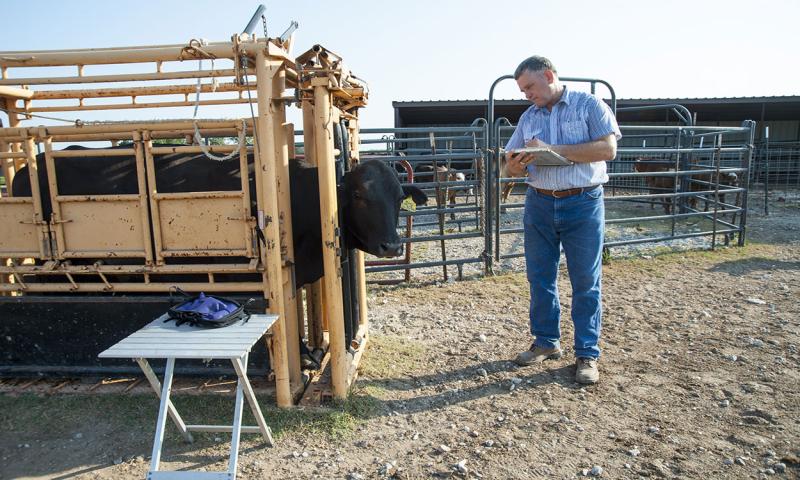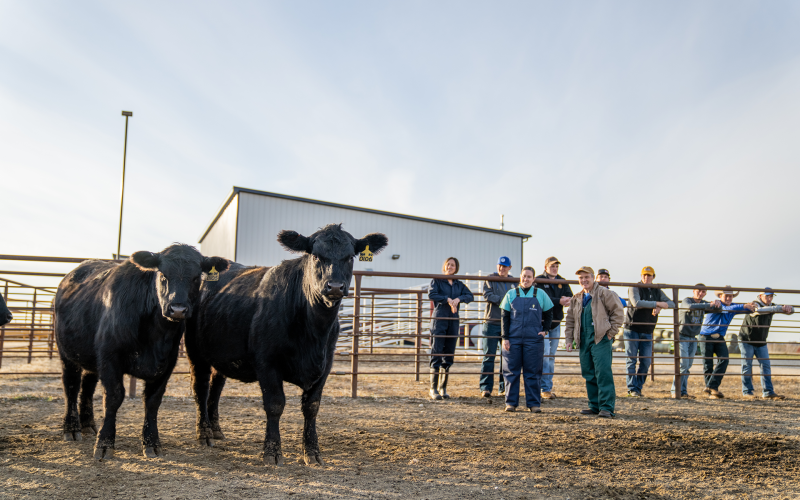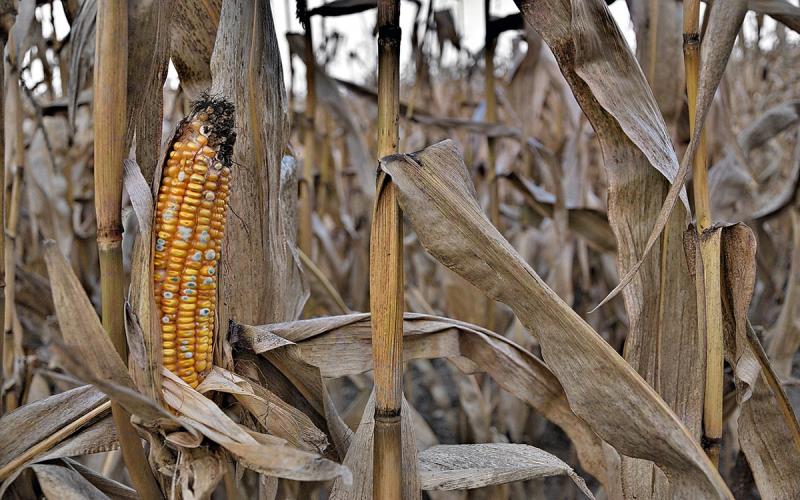
Written by Addie Stamps, former SDSU Extension Livestock Production and Stewardship Field Specialist.
One of the main concerns of any cattle producer should be animal welfare. However, with that being said, there are a few positive management decisions that can become stressors to cattle. These include weaning, castration, branding, processing, transportation, and artificial insemination. All these management decisions have positive outcomes, but they can also trigger a stress response. Stressed cattle typically have decreased feed and water intake, increased flight zones, and an increased chance of sickness. In turn, this can decrease animal wellbeing and profitability; therefore, the interest in cattle calming products has increased, including products with the main ingredient of synthetic Maternal Bovine Appeasing Substance (abbreviated as MBAS).
What Are MBAS Products?
Products with the main ingredient of synthetic MBAS can be applied to cattle with the goal of overcoming stress. MBAS is natural and secreted through the skin by the mammary gland of lactating animals. By that information alone, you can start to see how this product may reduce stress in calves at the time of weaning. MBAS is administered topically to animals and enters the nose, where it desensitizes regions of the hypothalamus. The hypothalamus is a region of the brain that has many functions, one of which is triggering the release of stress hormones. So, by desensitizing this region of the brain, hopefully there will be a decrease in stress responses by the animal.
Now the question, “Do these products really work?” One of these products is FerAppease®, which has been extensively researched. There is reported data that shows treated calves had an increase in average daily gain post-weaning. Another study found that treated calves had decreased cortisol levels post-castration. They have also found that antibodies against viral infections were greater in treated calves. Along with scientific research, there is an overwhelming number of satisfied producers that have used the product.
Additional studies have tested the impact of MBAS on meat when used on feedlot cattle pre-slaughter. When cattle endure high stress immediately before harvest, it tends to negatively affect the meat color, texture, and taste. By reducing stress levels at the end of an animal’s life we can ensure that months of hard work around animal welfare were not wasted, and that the best quality product is provided to consumers.


